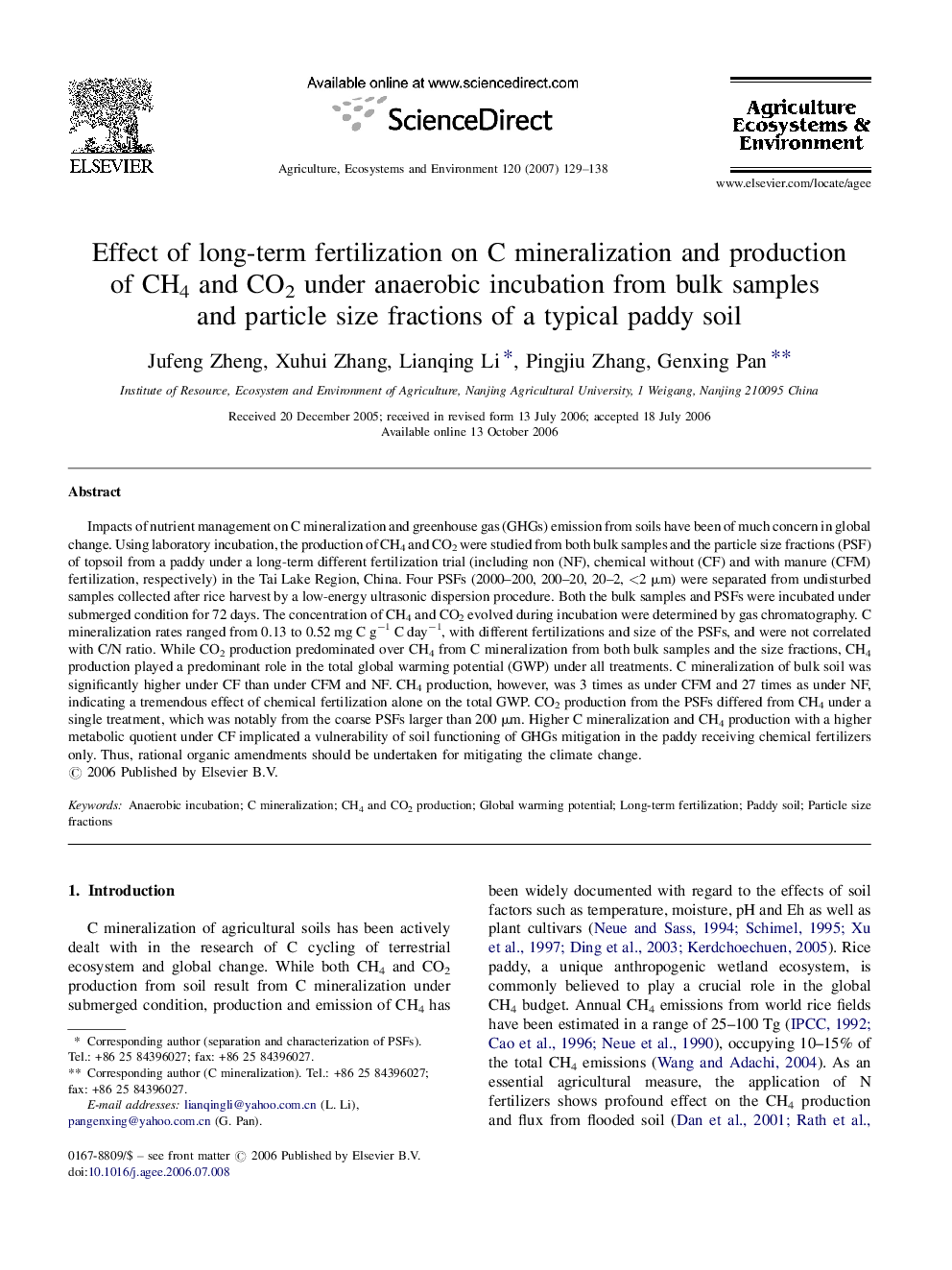| Article ID | Journal | Published Year | Pages | File Type |
|---|---|---|---|---|
| 2415592 | Agriculture, Ecosystems & Environment | 2007 | 10 Pages |
Impacts of nutrient management on C mineralization and greenhouse gas (GHGs) emission from soils have been of much concern in global change. Using laboratory incubation, the production of CH4 and CO2 were studied from both bulk samples and the particle size fractions (PSF) of topsoil from a paddy under a long-term different fertilization trial (including non (NF), chemical without (CF) and with manure (CFM) fertilization, respectively) in the Tai Lake Region, China. Four PSFs (2000–200, 200–20, 20–2, <2 μm) were separated from undisturbed samples collected after rice harvest by a low-energy ultrasonic dispersion procedure. Both the bulk samples and PSFs were incubated under submerged condition for 72 days. The concentration of CH4 and CO2 evolved during incubation were determined by gas chromatography. C mineralization rates ranged from 0.13 to 0.52 mg C g−1 C day−1, with different fertilizations and size of the PSFs, and were not correlated with C/N ratio. While CO2 production predominated over CH4 from C mineralization from both bulk samples and the size fractions, CH4 production played a predominant role in the total global warming potential (GWP) under all treatments. C mineralization of bulk soil was significantly higher under CF than under CFM and NF. CH4 production, however, was 3 times as under CFM and 27 times as under NF, indicating a tremendous effect of chemical fertilization alone on the total GWP. CO2 production from the PSFs differed from CH4 under a single treatment, which was notably from the coarse PSFs larger than 200 μm. Higher C mineralization and CH4 production with a higher metabolic quotient under CF implicated a vulnerability of soil functioning of GHGs mitigation in the paddy receiving chemical fertilizers only. Thus, rational organic amendments should be undertaken for mitigating the climate change.
